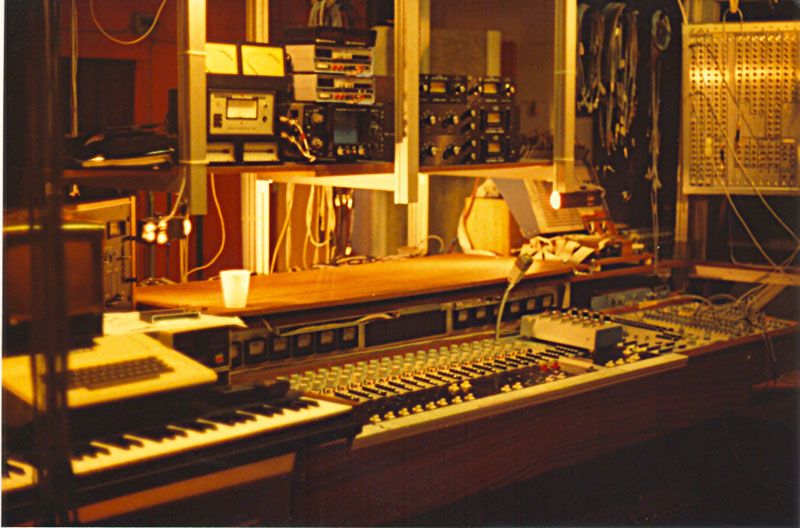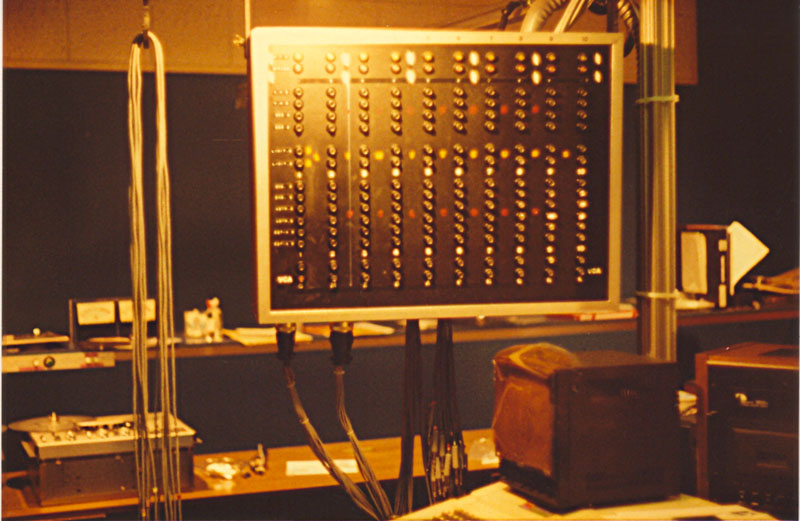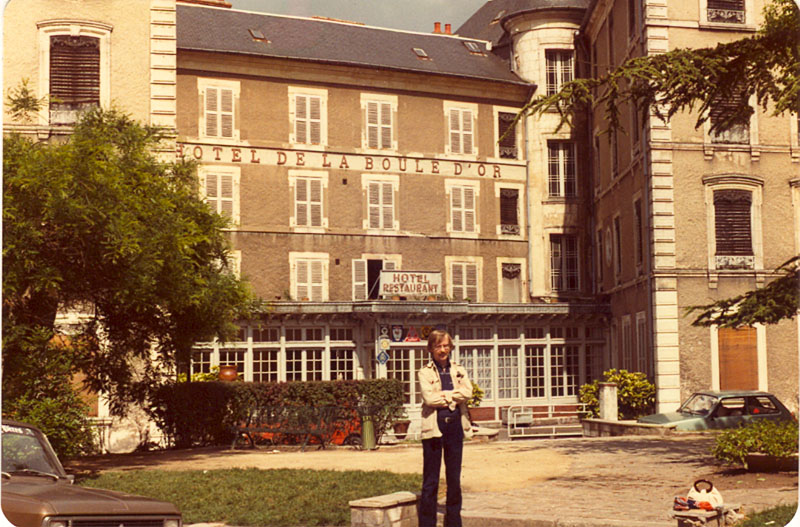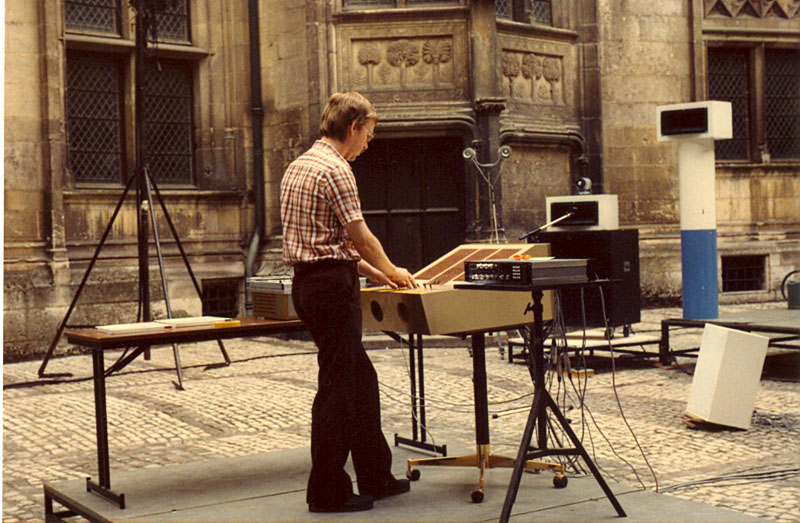The poem is heard on three levels. First there is the original reading interspersed throughout the piece in five sections. Then there are rhythmic variations based on the author's improvisation with the text. And finally, there are abstract sounds created through transformation of specific speech elements: sibilants, consonants, and vowels.
The collaboration between composer and writer, coming shortly after their work on the longer piece, Love Songs, extends their interest in the continuum between language and sound, the border country where words become pure sounds and can change back again. As described by the author,
"the music becomes the enactment of the text, a little play, a stage set up for it. And as we take out seats and the curtains part we are not surprised when, suddenly, the masks appear as words, when the masks are words, come out in the light, sounds and syllables dancing. Apart and together again. Language. A poem has come to visit. Behold the poem, it is pointing to / the blind man / over there."
The Blind Man is available on the Cambridge Street Records and Wergo CD Digital Soundscapes. It was commissioned by and realized in the studios
of the G.M.E.B. in Bourges, France.
A complete documentation analysis of the work is also available on the WSP Database (contact Barry at truax@sfu.ca for guest access).
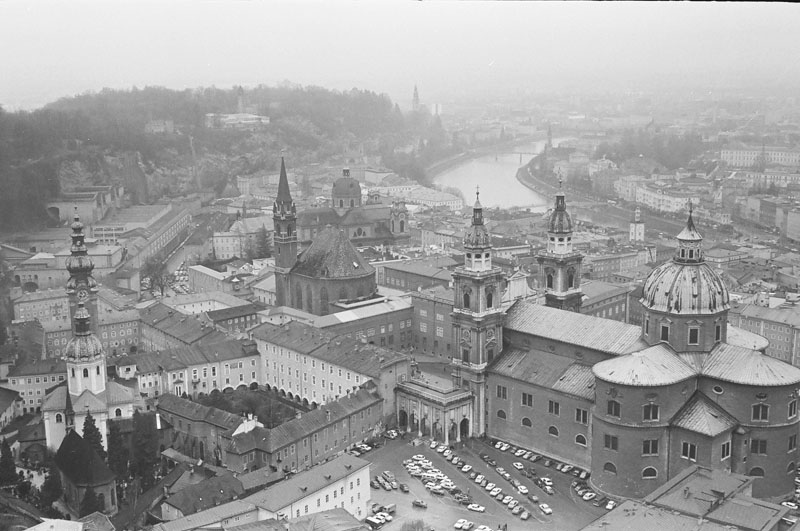
Salzburg Cathedral from Hohensalzburg Castle, 1975
The blind man -
the wind is invisible,
it does not want to know;
already it has come
and is leaving again
heave a sigh,
the wind
will not resolve this problem
touch the frozen tree
(the wind is careful as a locksmith)
the wind has come and gone
and he will come again like a blind man
tapping his cane
a blind man tapping his cane
arriving to pick up his load
of pollen or birds
his bagful of whistles and scents
(his catcalls)
the blind man
(his currency of leaves)
and lock them up in a secret place
where no one has ever heard
or seen from
the wind
again
- Norbert Ruebsaat © 1979
